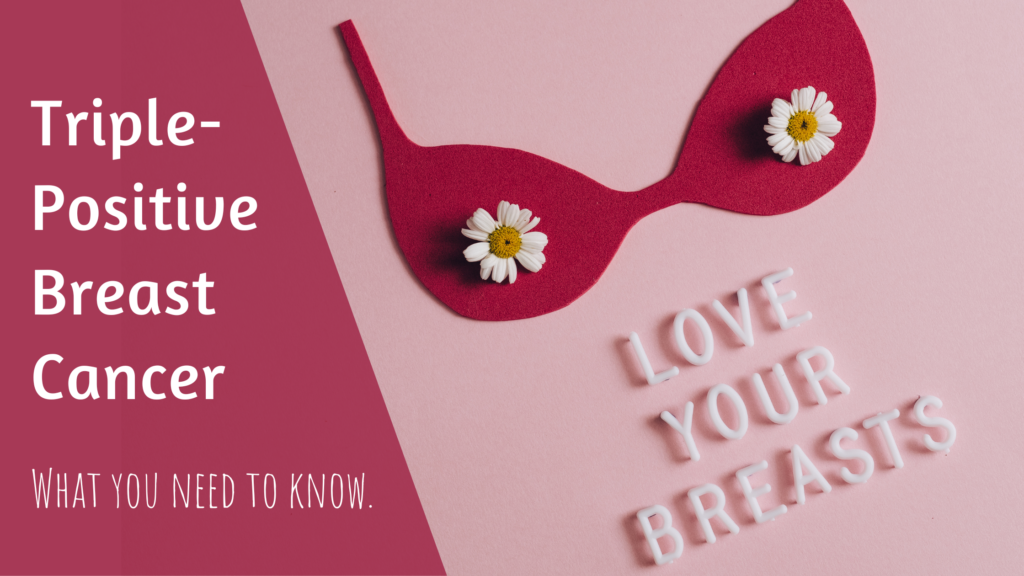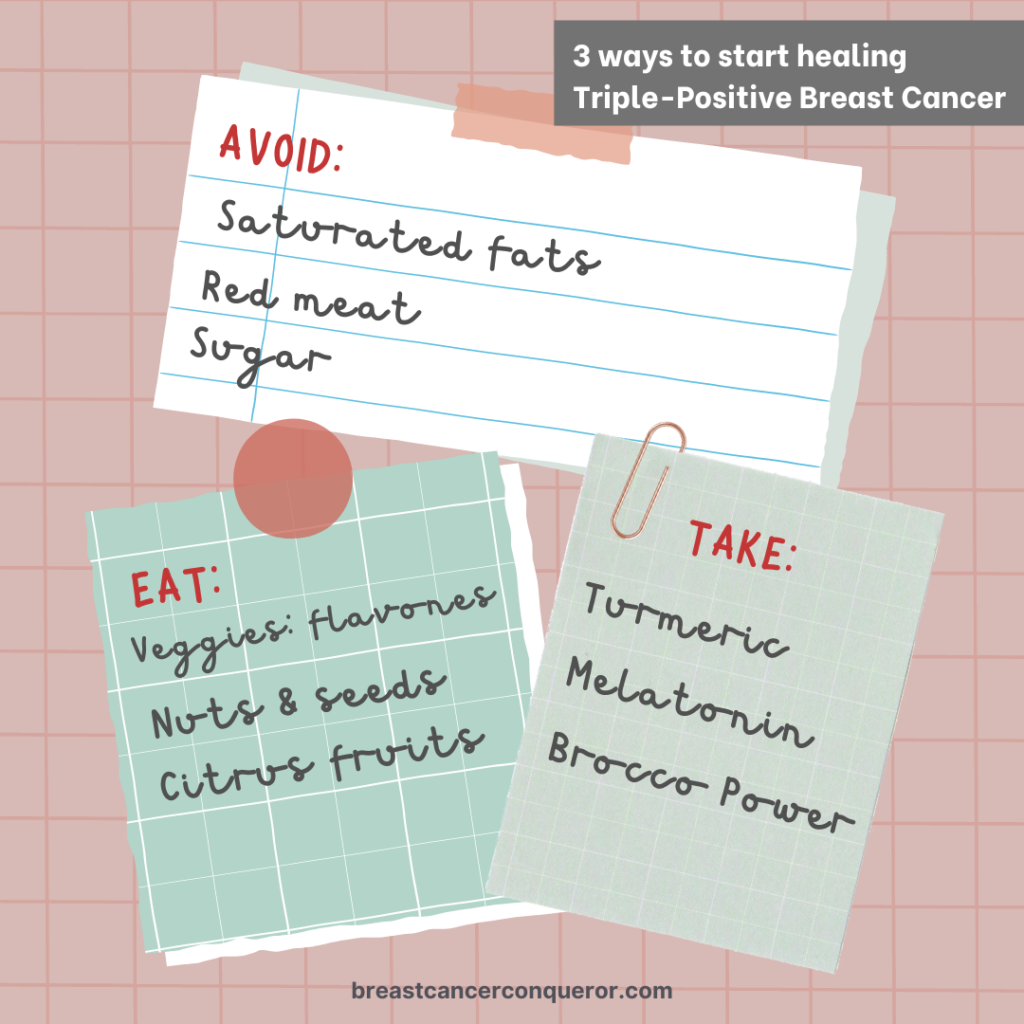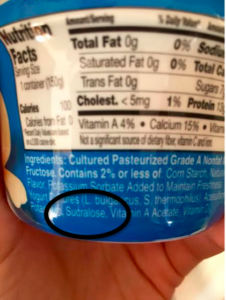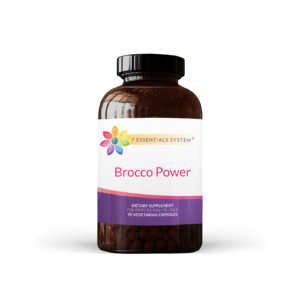

To learn more about natural ways to heal Triple-Negative Breast Cancer, please click here.
Triple-Positive Breast Cancer
Before we get started, I just want to remind you that—healing is for you! You do have the power to heal from triple-positive breast cancer, and you have come to the right place! Whatever unique healing route you take, please remember to bring along 7 Essentials System® on your journey.
Healing emotional wounds and balancing your energy is equally important to physical treatments and what you put into your body. Triple-positive breast cancer may be a tricky one, but it is nothing that you, your medical team, and your BCC coach can not conquer! I believe in you.
What does “triple-positive” mean in everyday words?
This is why you are here and why I create all these blogs and podcast episodes! Knowledge is power, and it empowers you to make confident decisions!
Triple-positive tumors account for about 10% of breast cancers. They represent a unique biological and clinical behavior because the cancer is estrogen, progesterone, and HER2 positive. Therefore, it is critical to identify exactly what is happening in your body so you can avoid overtreatment.
Triple positive breast cancer is estrogen-receptor-positive (ER+), progesterone-receptor-positive (PgR+), and HER2/neu-positive (HER2+). When the hormone progesterone binds to progesterone receptors, it stimulates the growth of the cell. The same goes for estrogen. For HER2, growth factors bind to this receptor to stimulate growth.
“They overexpress both the human epidermal growth factor receptor 2 (HER2) oncogene and the hormonal receptors (HR) to estrogen and progesterone. These cancers represent a unique therapeutic challenge because of a bidirectional cross-talk between the estrogen receptor alpha (ERα) and HER2 pathways leading to tumor progression and resistance to targeted therapy.”
In everyday words, it means:
These specific types of cancer cells grow in response to estrogen (ER), progesterone (PR), and a growth-promoting protein that’s on the outside of all breast cells known as HER2. Cancers that are triple-positive may behave differently than expected based on HER2 or ER positivity alone. Triple-positive breast cancer cells are also affected by the relationship between these receptors, an interaction referred to as “cross-talk.”
What cross-talk means:
The interaction (“communication”) between HER2 and ER receptors is called “cross-talk.” Due to the presence of HER2 and ER, triple-positive breast cancer may be affected by the relationship between these receptors. The cross-talk between HER2 and ER may signal hormonal resistance. This means the chatter between the receptors could result in anti-estrogen therapy being less effective.
Similarly, activation of ER signaling (related to being ER-positive) may result in resistance to HER2-targeted therapies, resulting in some cancers responding better than others to HER2-blocking drugs.

Symptoms of Triple Positive Breast Cancer
Usually, a lump in your breast is the most common reason a woman would opt in for testing triple positive/most breast cancers.
Here are other symptoms that you should look for:
- Change in size, shape, or appearance of the breast or nipple
- An inverted nipple (turning inward)
- Swelling of all or part of a breast—even if no lump is felt
- Nipple discharge that isn’t breast milk
- Skin changes on the breast or nipple—red, dry, flaky, or thickened
- Swelling of part or all of the breast
Triple-positive breast cancer symptoms are often the same as tumors without receptors. The difference shows up through a biopsy tissue sample or other forms of testing. It is also important to know that many of the symptoms mentioned above can be caused by benign (non-cancerous) breast conditions. Therefore, it is critical to have your symptoms checked by a medical professional instead of guessing and stressing yourself out!
Triple-Positive vs. ER-Positive
Triple-positive cancers are more like to have positive lymph nodes. They are often more aggressive than those that are just ER-positive (estrogen receptor positive or ER+).
Triple-Positive vs. Triple-Negative
Triple-negative breast cancers have the opposite expressions of hormones. They don’t express estrogen or progesterone receptors and lack overexpression of HER2. This type is often found in women with the BRCA1 mutation and non-BRCA gene mutations. There are lots of natural ways to heal triple-negative, and I wrote all about them in this blog post.
Natural Support For Triple-Positive Breast Cancer
Foods to avoid at all costs because they have been found to promote triple-positive (especially HER2) cancer growth:
 White bread and sugary foods
White bread and sugary foods
Cancer cells have more receptor sites for glucose than regular healthy cells, leading to the obvious (and scientifically verified) conclusion that glucose feeds cancer cells. Please take a moment to learn about how glutamine and glucose (sugars) fuel breast cancer. This podcast episode has also helped a lot of women break free of their sugar addiction.
Sugar is also super sneaky because over 60 different names can disguise it. If you read a long word ending in “ose” on a package label, it most likely will be a form of sugar: sucrose, dextrose, fructose, and maltose are a few common ones.
Saturated fats
Butter, red meat, bacon, full-fat dairy, and coconut are all saturated fats that may increase the risk for receptor-positive breast cancers (triple-positive). Learn more in this study that suggests saturated fat is linked to developing triple-positive.
Red meat*
This Harvard study found that “One serving a day increment in red meat intake during adolescence was associated with a 22% higher risk of premenopausal breast cancer, and each serving per day increment during early adulthood was associated with a 13% higher risk of breast cancer overall. Those who ate more poultry during the same period had a lower risk of developing breast cancer.”
One of the reasons why is because red meat contains haem iron (which gives red meat its color). When broken down in the gut, it forms N-nitroso compounds which can damage cells. Additionally, the preservatives, nitrates, and nitrites used in processed meats also break down into N-nitroso compounds.
** I would like to mention that all the studies done on meat about health and dis-ease, are commercially raised meats – full of antibiotics, growth hormones, and toxins. Grass-fed meats that enjoy the sunshine and fresh air and are not injected with any pharmaceuticals are a much healthier version of red meat.
Alcohol
Drinking two alcoholic drinks a day may increase your risk of breast cancer by 30 – 50%. A glass here and there is fine, but I highly suggest strictly sticking to only the rare glass—it’s just not worth it! However, where there is wine (that is organic and sugar-free!)—there is a way—just make sure that these wines are in your glass! Take a look at Dry Farm Wines if you are interested in getting a low-alcohol and organic wine with no additives.
Healing Foods For Triple-Positive Breast Cancer
Citrus fruits
A 2017 study found two types of flavonoids (naringenin and hesperetin) may help stop HER2-positive and triple-positive cell growth.
Vegetables with flavones 
Flavones (also called phytoestrogens) are plant-based compounds found in veggies such as cabbage, celery, bell pepper, parsley, and broccoli. If you couldn’t stand eating broccoli as a kid and still think it’s yucky, my Brocco Power will give you 500 grams of fresh broccoli in just one capsule! Several studies recommend flavones because they can slow the growth of triple-positive breast cancer cells.
Turmeric
Turmeric contains the antioxidant curcumin, which is popularly used for its anti-inflammatory properties and anticancer effects. I sell a highly bioavailable curcuminoid formulation in my shop. Curcumin’s anticancer effects and promotion of cancer cell death come from the pathway that involves hormone receptors and the HER2 receptor. Learn more via this study.
Foods with psoralen
Psoralen is a natural component in foods such as figs and celery. For a long time, we have known that it disrupts DNA replication and causes cell death when activated by an energy source such as UV light. Recently, researchers from Duke University identified that it could also kill tumor cells and blocks the signaling pathway of cancers, including triple-positive.
For example, “When HER2 is overproduced, it fuels uncontrolled cell growth, leading to an aggressive form of cancer. Psoralen shut down this process in experiments using HER2 overexpressing breast cancer cell lines.” If you are curious to learn more, please review this study here.
Melatonin foods
Melatonin isn’t just found in a capsule and is helpful for sleep. It also blocks HER2-positive breast cancer cells from dividing and spreading. Sprouted seeds, mushrooms, nuts, fish, sprouted legumes, and eggs give your body melatonin. Please take a moment to learn all about how monumental melatonin is for your healing journey via this blog post.
Grapes
Go on and lounge around popping grapes in your mouth—Dr. V’s orders! Organic red and purple grapes are rich in an antioxidant called resveratrol. It balances natural estrogen hormones in your body and may improve the results of treatments such as radiation and chemo. (Make sure you measure your blood sugar when eating grapes.
As always, I am here to give you food for thought—figuratively, and you literally should eat veggies with flavones! If you are feeling overwhelmed, working with a private coach can turn those feelings into being capable and confident. She can work with you on creating a specific plan to heal mentally, emotionally, and physically.
Always discuss any changes in your diet or supplements with your integrative or conventional oncologist.

Thank you for touching on Triple Positive Breast Cancer! It’s rare to find information on it. I was diagnosed in 2019 with TPBC and have been in remission since September 2020. However, now I am diagnosed with Pagets Disease of the Breast. Here I go again… argh!
I understand the “argh” for sure! Please remember to review Dr V’s book. It is a great template to figure out root causes!